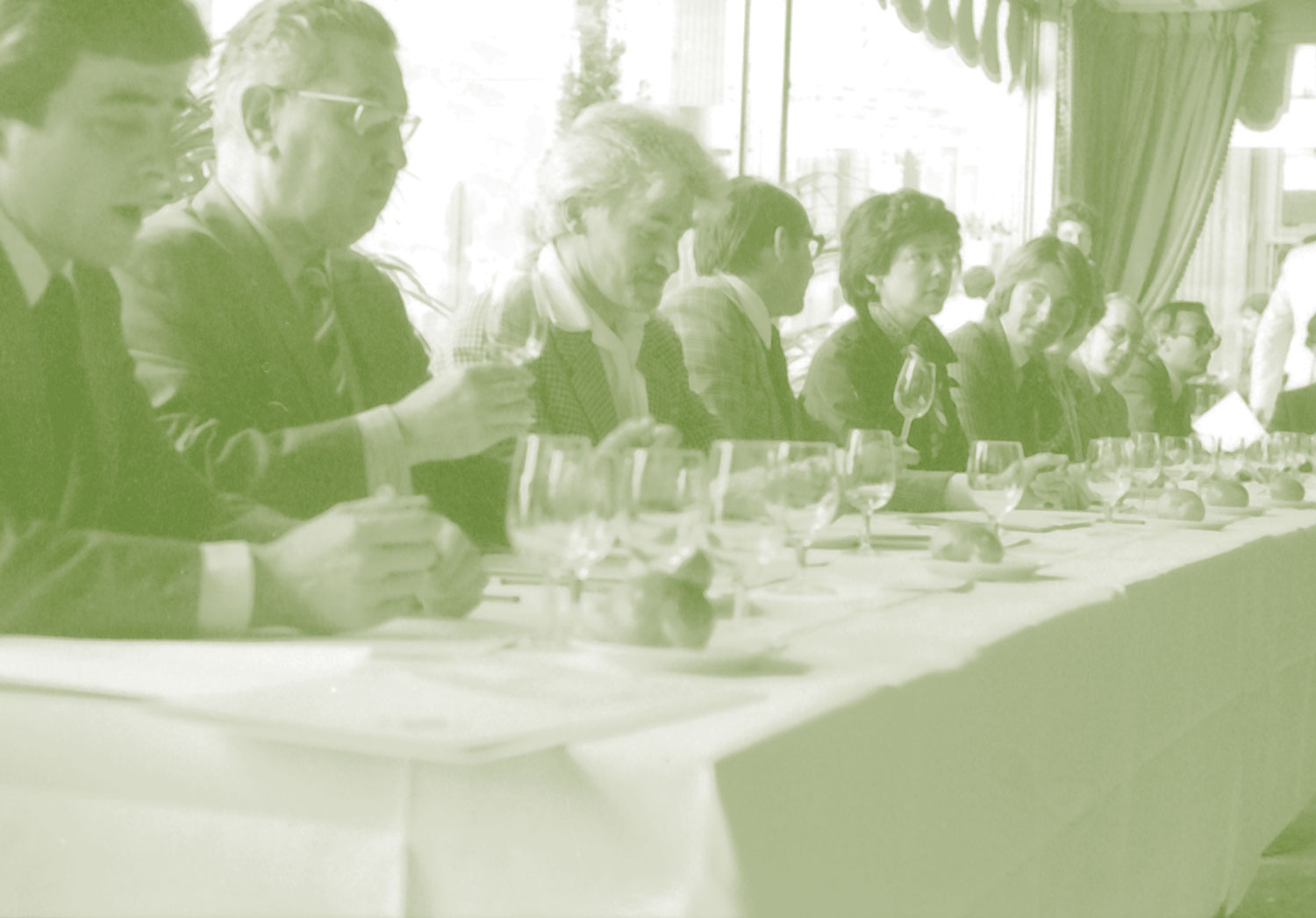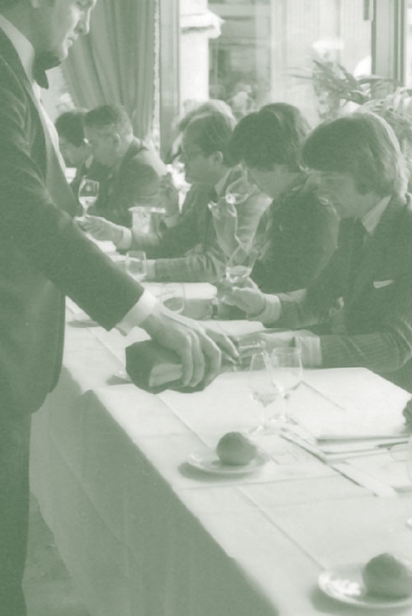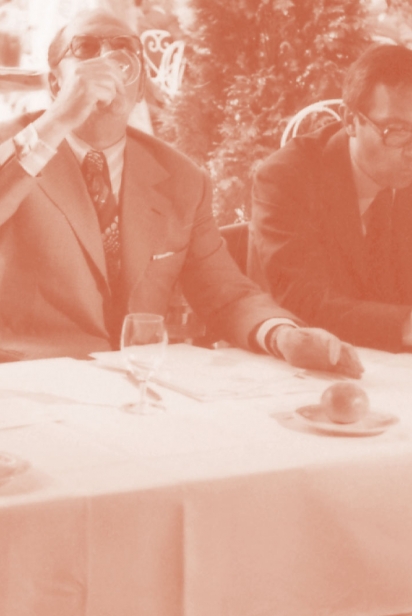The Rise of Napa Valley Wineries: How the Judgment of Paris Put California Wine on the Map
Laurie McAndish King’s interview with Mark Gudgel, author of The Rise of Napa Valley Wineries: How the Judgment of Paris Put California Wine on the Map (The History Press, 2023)
When Mark Gudgel first visited Napa Valley in 2013—on his honeymoon—he didn’t expect to fall in love. But as the Midwestern wine aficionado and his wife ate, drank and talked their way through the valley, they became enchanted with its unique culture. Gudgel has been researching Napa Valley and writing about history ever since. Often for this magazine.
He’s especially impressed with the way Napa winemakers share their learnings witheach other: discussing the pros and cons of dry farming, testing new varietals to address climate change and leading the way in regenerative farming.
But Gudgel doesn’t do research—or anything else, apparently— in a small way; his studies resulted in certification as a sommelier. (He also runs marathons, holds a degree in divinity, has published two books on genocide studies, is a board member of several not-for-profits and was a Fulbright Scholar.) The result of Gudgel’s investigations into the history of the Napa Valley is an entire book: The Rise of Napa Valley Wineries: How the Judgment of Paris Put California Wine on the Map, published by The History Press earlier this year.
Gudgel’s book doesn’t begin with the event usually heralded as the turning point in California winemaking: the 1976 Judgment of Paris. Gudgel takes a broader view, beginning with the presence of indigenous Wappo people who cared for the valley, and including the repercussions of European colonizers and the Catholic Church. His formidable research—which reads like a chatty, affectionate genealogy—illuminates the interrelationships, marriages, estate sales, mentorships and training lineages that link the Napa Valley community to this day.
What was it that made California wines fine enough to beat out the French in that celebrated 1976 tasting—and resulted in the “fall of the myth of indomitable French terroir?” According to Gudgel, the Old World emphasis on terroir—the heritage of the great French wine estates and the land they encompassed— seems altogether too narrow. “Yes, land and weather and climate and the aspect of the vineyard and the diurnal range and everything else matters a great deal,” he says. “But if you gave me the greatest grapes in the world—tons of grapes from To Kalon—you could give me Robert Mondavi’s facilities and … French oak barrels, and I still could not make [anywhere else] the kinds of wines you find in Napa.”
Winemaking is a long-term decision-making process, Gudgel observes. “The people who plant the grapes and tend to the vines and harvest the grapes and turn them into wine—all those peopleand the decisions they make are an important part of wine— and I would argue that they are part of the terroir.” It’s about which grapes to plant, how to farm them, when to harvest, how to blend. Something special happens in Napa Valley—winemakers get together to sample each other’s products, they communicate and collaborate, and as a result they all improve.
When I ask Gudgel what he hopes others might take away from reading The Rise of Napa Valley Wineries, the former theologian hesitates for only a second. “I hope others will gain sense of the inter-connectedness in their own realms,” he says, “whatever those might be.”
Laurie McAndish King is an award-winning travel writer and photographer whose stories have aired on NPR and been published in Lonely Planet, Travelers’ Tales and other literary anthologies. Her articles and photography have also appeared in the Washington Post, the San Francisco Chronicle and Smithsonian magazine. LaurieKing.com.
Excerpt from Chaper 3 of The Rise of Napa Valley Wineries: How the Judgment of Paris Put California Wine on the Map By Mark Gudgel (The History Press, 2023)
... As the tasting ensued, Taber observed that the judges appeared nervous and uncertain—hardly the posture one would expect from the most respected wine experts in all of France. “There was lots of laughing and quick side comments,” Taber wrote. Taber had the run of the place due to other journalists and news outlets refusal to take it seriously, and soon realized that the judges weren’t only nervous, they were confused. They talked more than was customary, and often disagreed with one another about the origin of a wine. Taber took note of a number of instances in which a judge would openly criticize a wine and, in the same breath, declare it American, when in fact the wine was French. Similarly, judges would compliment a wine’s quality, certain of its French origins, and Taber would cross-reference his cheat-sheet before silently jotting a note to himself: the wine was from California. After one judge tasted the Freemark Abbey Chardonnay and responded aloud “Ah, back to France,” Taber thought to himself: Hey, maybe I’m going to have a story here after all. As the white wine tasting concluded, Taber spoke to one of the judges who openly admitted: “Our confusion showed how good California wines have become.”
In a hurry to get out of the Intercontinental in time for the staff to set up for the wedding, Spurrier announced the results of the white tasting while the reds were being set up. The judges were horrified. They themselves had ranked an American wine first, and by a wide margin no less? They themselves had awarded California wines three out of the top five places? How was this possible? The one wine they had been able to identify as American, the David Bruce, they had been sure to properly disparage, but beyond that the quality of the American wines clearly matched and even exceeded that of the French producers. The results, as read aloud by Spurrier to the consternated panel, were as follows:
WHITE WINE TASTING RESULTS
First: Chateau Montelena 1973 (California)
Second: Meursault Charmes 1973 (France)
Third: Chalone 1974 (California)
Fourth: Spring Mountain 1973 (California)
Fifth: Beaune Clos des Mouches 1973 (France)
Sixth: Freemark Abbey 1972 (California)
Seventh: Batard-Montrachet 1973 (France)
Eighth: Puligny-Montrachet 1972 (France)
Ninth: Veedercrest 1972 (California)
Tenth: David Bruce 1973 (California)
Taber admits to having been uncertain who won, given the French word “Chateau” in the name of the Napa Valley winner, but Gallagher quietly dispelled his doubts. According to his own account, Taber felt a sense of pride which, as a journalist, he did not vocalize in the moment.
Given the results, it is somewhat surprising that the judges even proceeded to taste the red wines at all, yet indeed they did. This time, according to Taber, “the judges seemed both more intense and more circumspect.” Taber continued to monitor their comments and compare their remarks to his list. “Their comments about the nationality of the wine in their glasses were now usually correct,” wrote Taber. The increased focus and accuracy of the panel, however, could do nothing to detract from the quality of the wines they were tasting. After they had concluded their work and Spurrier had tallied the results, he again read them aloud to the room:
RED WINE TASTING RESULTS
First: Stag’s Leap Wine Cellars 1973 (California)
Second: Chateau Mouton Rothschild 1970 (France)
Third: Chateau Montrose 1970 (France)
Fourth: Chateau Haut-Brion 1970 (France)
Fifth: Ridge Monte Bello 1971 (California)
Sixth: Chateau Leoville-Las-Cases 1971 (France)
Seventh: Heitz Martha’s Vineyard 1970 (California)
Eighth: Clos du Val 1972 (California)
Ninth: Mayacamas 1971 (California)
Tenth: Freemark Abbey 1969 (California)







